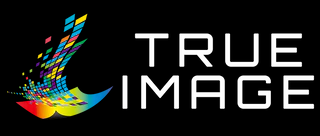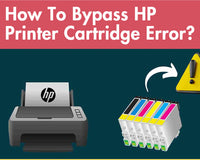With the advent of inkless printers, the landscape of printing technology has significantly expanded. Traditional inkjet and laser printers, long the staple of offices and homes alike, now face competition from innovative inkless alternatives. But how do these two technologies stack up against each other? This blog will explore the key differences, advantages, and drawbacks of both inkless and traditional printers. By examining all aspects of factors, we aim to help you determine which type of printer best suits your needs.
What Are the Traditional Printers?
Traditional printers use ink cartridges or toner cartridges to produce images and text on paper. They are categorized mainly into two types: inkjet and laser printers.
- Inkjet Printers: These printers use liquid ink sprayed through microscopic nozzles onto the paper. They are widely known for their ability to produce high-quality color prints and are commonly used for photo printing. There are some common models, like HP OfficeJet Pro 9010, 9012, 9020, and so on.
- Laser Printers: These printers use a laser beam to produce an image on a drum, which is then coated with toner (a fine powder) that is transferred to paper and fused using heat. They are renowned for their speed and efficiency, especially in producing black-and-white documents. The popular laser printers are HP Color LaserJet Pro MFP M479fdw, Brother MFC-L3750CDW, and so on.

What Are the Inkless Printers?
Inkless printers, as the name suggests, do not use ink or toner. Instead, they employ alternative technologies to create images and text on paper. The two prominent types of inkless printing technologies are thermal printing and ZINK (Zero Ink) printing.
- Thermal Printers: These printers use heat to create images on specially coated thermal paper. The paper changes color when heated, producing the desired text or image. Thermal printers are commonly used for receipts, shipping labels, and barcodes.
- ZINK Printers: ZINK technology utilizes paper embedded with dye crystals that are colorless until activated by heat. A ZINK printer applies heat at different temperatures and intensities to produce a full spectrum of colors, resulting in a printed image.
Traditional Printers vs. Inkless Printers: Key Differences
1. Ink Consumption and Cost
Traditional printers require cartridge supplies, which need regular replacement. It leads to a high ongoing cost since the ink or toner can be expensive, and compatible consumables must be purchased frequently to maintain printing capabilities.
Inkless printers eliminate the need for ink or toner, relying instead on special paper or advanced technology that does not require consumables. Although the initial cost of an inkless printer might be higher due to the specialized materials, the absence of ink or toner replacement leads to significantly lower long-term expenses.
2. Printing Mechanism
Traditional printers involve depositing liquid ink or powdered toner onto paper when printing. This process can be carried out through various methods such as inkjet, laser, or dot matrix, with the ink or toner being transferred to the paper via a print head or drum unit.
How does a inkless printer work? on the other hand, it use non-ink-based methods like thermal technology or pressure. For instance, thermal printers apply heat to activate dye within special thermal paper. It results in a fundamentally different printing process that does not involve liquid or powdered ink.
3. Paper Compatibility and Versatility
Traditional printers are versatile regarding paper compatibility and capable of printing on various paper types and sizes, such as plain paper, photo paper, and cardstock. This versatility allows for a wide range of printed materials, from simple documents to high-quality photos.
Inkless printers, however, are restricted to specialized heat-sensitive paper, which can be more expensive and less accessible than standard paper, limiting the types of materials they can produce.
Traditional Printers vs. Inkless Printers: Pros and Cons
★ Pros of Inkless Printers
- Cost Savings: Fewer consumables mean lower maintenance and operational costs.
- Reduced Waste: Eliminating ink cartridges and toners reduces waste and the environmental impact associated with their disposal.
- Compact Design: Many inkless printers are smaller and more portable than traditional printers, making them ideal for mobile use. Additionally, With fewer moving parts and no need for cartridge replacements, these printers often have less downtime.
- Long-Lasting Prints: Some inkless technologies produce highly durable and water-resistant prints suitable for labels and receipts.
★ Cons of Inkless Printers:
- Limited Print Quality: Inkless printers generally offer lower resolution and color quality compared to traditional printers, and they, especially thermal ones, can only print in black and white.
- Special Paper Requirement: Some inkless printers require special paper, which can be more expensive and harder to find than standard paper.
- Specific Uses: Inkless printers are often limited to niche applications like receipts, labels, and shipping documents rather than general-purpose printing.
★ Pros of Traditional Printers
- Superior Resolution: Traditional inkjet and laser printers can offer high-resolution prints suitable for detailed graphics and professional documents.
- Various Colors: These printers are capable of producing various color prints. They can work with cartridges that contain black, cyan, yellow, and magenta ink or toner to print hundreds and thousands of colors.
- Multi-functional: Many traditional printers are multi-functional, offering scanning, copying, and faxing capabilities.
- Readily Available Supplies: Ink and toner cartridges are widely available and come in different options to suit various budgets and needs. Meanwhile, there are many reliable third-party cartridge suppliers, like True Image. You can find most alternatives of popular office brands on the market, such as HP toners, Brother toners, Canon toners, and so on.
★ Cons of Traditional Printers
- High Consumable Costs: Using traditional printers needs to bear more additional costs, especially if using OEM products. Even compatible cartridges can add up over time, contributing significantly to the overall operational costs.
- Bulkiness: Traditional printers are generally larger and less portable than inkless printers, making them less suitable for mobile use, and they often require more complex setup and installation processes, which can be cumbersome.
- Limited Connectivity Options: Older printers may lack wireless connectivity options, requiring physical connections to computers via USB cables, which can be inconvenient in a modern, flexible workspace.
Right Choice Between Inkless Printers And Traditional Printers
Both inkless printers and traditional printers have their unique strengths and weaknesses. If you are looking for a convenient solution, an inkless printer may be the way to go. However, if you require high-quality prints for professional or creative purposes, a traditional printer with ink and toner cartridges may be the better option. Ultimately, the key to making the right decision is to carefully consider your printing needs and preferences to find the one that best fits your requirements. No matter which you opt for, remember to take proper care of your printer and use it responsibly.

















